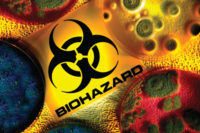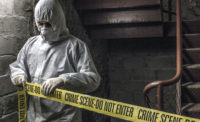Consequences of Overconfidence in Biohazard Recovery and Remediation








I have found that comfort taken in recovery and remediation work is not all too different from other high risk behavior over-confidence. In fact, as a comparison, I can recount the time I got my first Harley Davidson. Safety was my priority. I had experienced friends’ deaths and serious injury due to motorcycle accidents and I promised myself that wouldn’t be me. I bought a DOT-approved helmet, riding jacket, riding boots, and gloves. Initially, I wore everything, every time. As the warm weather rolled in and my confidence grew, I shed my riding jacket. It wasn’t long before I was riding in shorts, a tank top and donned myself with one of those helmets that were not DOT approved, AKA “brain buckets”, which were just that, only good for containing the grey matter mess after an accident. I lived in Northern New Jersey and was riding on pothole-covered roads like I-95, alongside 18 wheelers, texting drivers and was frequently driving into New York City with crazy taxi drivers and oblivious site-seeing pedestrians. It wasn’t until my first spill and luckily minors scrapes and bumps that I realized, “What was I thinking?” I represented the stereotypical overconfidence ignorantly awaiting injury and consequence.
When working with mold, blood, other potentially infectious materials or infectious diseases, comfort and confidence leading you to neglect the use of proper PPE is not only extremely foolish, but highly risky.
Example of standard PPE for crime and trauma scene cleaning
|
Proper PPE
Proper PPE in our business is not only essential for protection from biohazards, but also function as protection from the products we use. For instance, many cleaning and disinfection products can be dangerous because they act as very strong oxidizers that can cause skin, eye and lung irritation. In some cases, that irritation can cause permanent health consequences. Yet, it is just as commonplace for many to become victim to the same brazen intentional oversight of not donning appropriate PPE, similarly to my loss of attention to appropriate riding gear during my Harley days. The rude awakening from such habits can be minor, such as my scrapes and bruises, but others may not be. The risks faced when dealing with harmful pathogens are enormous and in many cases it are not safe to assume any part of job site is safe until the project has been completed.
Cross-Contamination Dangers
I have personally encountered pieces of furniture moved from the site of decomposition into another room only to find a large section of scalp and hair decaying on it. Who moved it? Why? Could it be contaminated with HIV or Hepatitis C? Of course it could be and you wouldn’t know until you were infected.
Can you say when you go into a crime scene that the first responders did not contaminate other areas? Their job is to save a life when they arrive. Their concern is not to focus on where they are walking or cross contamination by tracking fluids from room to room. In many cases, these are traces of fluids that can’t be seen. There are some pathogens that we face where there is no second chance. Poor decision-making in regards to how you protect yourself puts not only you at risk of contracting a terminal illness, but potentially risk passing a terminal illness to a family member or coworker.
Proper Equipment
Biohazard remediation is a specialized business. There is a lot of dedicated training and specific equipment intended to be used to perform the job properly (see table). This is what we sell our clients to ensure them that the highest standards and quality of the decontamination and disinfection will be performed. Integrity and professionalism are lost when you walk into the site of a decomposition or suicide without even a respirator of some sort. What is that telling our clients? Basically, you are telling them “hey this job can’t be that dangerous or big of a deal, this guy is in there without a respirator, he is in jeans with a pair of gloves. I could do that! What am I paying all of this money for?”
As we know, this is untrue, albeit these cavalier behaviors more frequent than desired.
There continues to be more companies entering into decontamination, and it is essential that the employees who perform these tasks are trained specifically for the risks involved. It is important that all owners, managers and supervisors set a precedent by wearing proper PPE, so that employees are more likely to follow suit. End the days of wearing a N-95 mask on the chin or top of their heads or wearing splash suits up to the waist with the arms tied because it is too hot. Keep in mind, safety is the utmost importance!
Looking for a reprint of this article?
From high-res PDFs to custom plaques, order your copy today!











